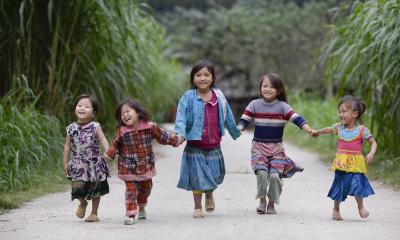
The questionnaires used for the Young Lives survey are developed specifically for each survey round, to capture the changes in household circumstances and the children's lives as they grow up. In each case, a core questionnaire is produced and used across all four study countries, with specific questions and sections added by each country team to capture information of particular relevance in that country. The table below gives links to the questionnaires used in each country.
- Younger Cohort Household Questionnaire (age 1) - includes sections on: Location information; Household composition; Pregnancy, delivery and breast-feeding; Child-care; Child health; Caregiver background; Livelihoods; Economic changes; Socio-economic status; Psychosocial well-being; Social capital; Anthropometry. The Peru questionnaire also included a section on Tracking.
- Older Cohort Household Questionnaire (age 8) - includes sections on: Location information; Household composition; Births and deaths; Child?s school; Child health; Caregiver background; Livelihoods; Economic changes; Socio-economic status; Child mental health (not Ethiopia); Social capital; Anthropometry. The Peru questionnaire also includes sections on Family income and on Tracking.
- Older Cohort Child Questionnaire (age 8) - includes sections: on Perceptions of well-being; Social capital; School and work; Health; Literacy and numeracy; Child development, Ravens CPM. The Peru questionnaire also includes a section on Tracking.
- Community Questionnaire: includes sections on: Physical environment; Social environment; Infrastructure and access; Economy; Health and education; Price questionnaire. The Peru questionnaire also includes Demographic information.
Any questionnaires without links are currently unavailable.
Round 1 survey (2002)
|
Ethiopia |
India |
Peru |
Vietnam |
|
|
|
|
The questionnaires used for the Young Lives survey are developed specifically for each survey round, to capture the changes in household circumstances and the children's lives as they grow up. In each case, a core questionnaire is produced and used across all four study countries, with specific questions and sections added by each country team to capture information of particular relevance in that country. The table below gives links to the questionnaires used in each country.
- Younger Cohort Household Questionnaire (age 1) - includes sections on: Location information; Household composition; Pregnancy, delivery and breast-feeding; Child-care; Child health; Caregiver background; Livelihoods; Economic changes; Socio-economic status; Psychosocial well-being; Social capital; Anthropometry. The Peru questionnaire also included a section on Tracking.
- Older Cohort Household Questionnaire (age 8) - includes sections on: Location information; Household composition; Births and deaths; Child?s school; Child health; Caregiver background; Livelihoods; Economic changes; Socio-economic status; Child mental health (not Ethiopia); Social capital; Anthropometry. The Peru questionnaire also includes sections on Family income and on Tracking.
- Older Cohort Child Questionnaire (age 8) - includes sections: on Perceptions of well-being; Social capital; School and work; Health; Literacy and numeracy; Child development, Ravens CPM. The Peru questionnaire also includes a section on Tracking.
- Community Questionnaire: includes sections on: Physical environment; Social environment; Infrastructure and access; Economy; Health and education; Price questionnaire. The Peru questionnaire also includes Demographic information.
Any questionnaires without links are currently unavailable.
Round 1 survey (2002)
|
Ethiopia |
India |
Peru |
Vietnam |
|
|
|
|






